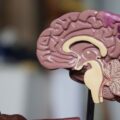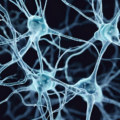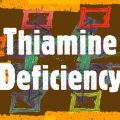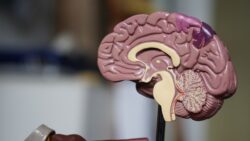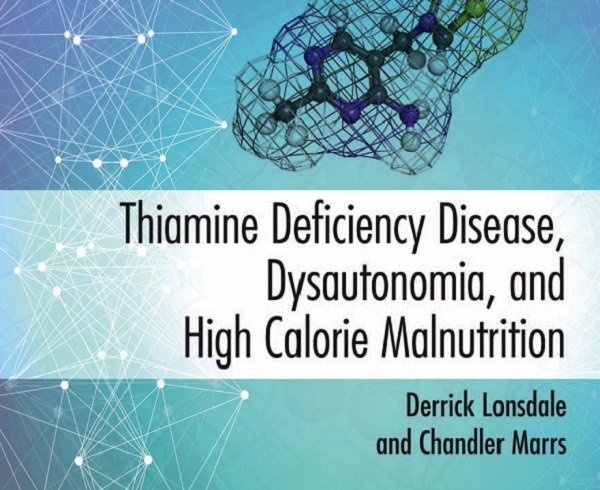One of the things I most love about social media and health research is the opportunity to identify patterns of illness across different patient groups. Here is an example of finding research from one patient group, ThyroidChange, that likely spans many others (Gardasil injured, post Lupron Hashimoto’s, and Fluoroquinolone reactions – to name but a few) and offers clues to a perplexing array of symptoms. The research, is about a little known association between movement and balance disorders and Hashimoto’s thyroiditis: Ataxia associated with Hashimoto’s disease: progressive non-familial adult onset cerebellar degeneration with autoimmune thyroiditis. Some background.
Hashimoto’s Disease
Hashimoto’s is the most common causes of hypothyroidism afflicting women at a rate of 10 to 1 compared to men. It is an autoimmune disorder in which antibodies attack the thyroid gland and destroy its ability to maintain normal thyroid hormone concentrations. The most common symptoms include: fatigue, muscle pain, weight gain, depression, cognitive difficulties, cold intolerance, leg swelling, constipation, dry skin. If left untreated, goiter – a swollen thyroid gland, appears. If left untreated for an extended period, cardiomyopathy (swelling of the heart muscle), pleural (lung) and pericardial (heart) effusion (fluid), coma and other dangerous conditions develop.
Hashimoto’s and Cerebellar Degeneration
A little known risk in Hashimoto’s is cerebellar degeneration. The cerebellum is the cauliflower looking section at the base of the brain that controls motor coordination – the ability to perform coordinated tasks such as walking, focusing on a visual stimuli and reaching for objects in space. The walking and balance disturbances associated with cerebellar damage or degeneration have a very distinct look, a wide gait, with an inability to walk heel to toe. Cerebellar ataxia looks like this:
In recent years, cerebellar involvement in attention and mood regulation have also been noted. The physicians reporting the Hashimoto’s – ataxia connection present case studies of six patients with Hashimoto’s disease, presumably controlled with medication and a progressive and striking shrinkage of the cerebellum (see report for MRI images) along with progressively debilitating ataxia (walking and balance difficulties) and tremors. Here’s where it becomes interesting.
Hashimoto’s: Medication Adverse Reaction and Misdiagnosis
Hashimoto’s disease is prevalent in our research into medication adverse reactions for Gardasil and Cervarix and Lupron, with some indications it may develop post Fluoroquinolone injury as well. The symptoms are difficult to distinguish from other neurological and neuromuscular diseases such as chronic fatigue syndrome, fibromyalgia, multiple sclerosis and an array of psychiatric conditions, and so Hashimoto’s often goes undiagnosed or is misdiagnosed and mistreated for some time.
Hashimoto’s, Demyelination and Cerebellar Damage
In some of the more severe adverse reactions to medications and vaccines that would lead to Hashimoto’s, the tell tale cerebellar gait disturbances have been noted and documented, along with a specific type of tremor (discussed below).
Research from other groups shows a strong relationship between thyroid function and myelin/demylenation patterns in nerve fibers in animals. Specifically, insufficient T3 concentrations demyelinates nerve axons, while T3 supplementation elicits myelin regrowth. Myelin is the white sheathing, the insulation that protects nerves and improves the electrical conduction of messages in sensory, motor and other neurons. Like co-axial cable in electrical wiring, when the protective sheathing is lost, electrical conductance is disrupted. The early symptoms of a demyelinating disease neuromuscular pain, weakness, sometimes tremors. These can be misdiagnosed as multiple sclerosis, fibromyalgia, chronic pain, when in reality, the culprit is a diseased thyroid gland.
Back to the Cerebellum
The cerebellum is a focal point of white matter axons – myelinated sensory and motor nerves. The cerebellum is where input becomes coordinated into motor movements or movement patterns. White matter damage in the cerebellum causes cerebellar ataxia, the movement and balance disorders displayed above. Hashimoto’s elicits white matter disintegration. Adverse reactions to medications and vaccines can elicit autoimmune Hashimoto’s disease. See the connection?
The Thiamine – Gut Connection
It gets even more interesting when we add another component of systemic medication adverse reactions – nutritional malabsorption, specifically thiamine deficiency. Almost across the board, patients with medication or vaccine adverse reactions report gut disturbances, from leaky gut, to gastroparesis, constipation, pain and a myriad of other GI issues that make eating and then absorbing nutrients difficult. Gut issues are common in thyroid disease too.
As we learn more, and as individuals are tested, severe nutrient deficiencies are noted, in vitamin D, Vitamin B1, B12, Vitamin A, sometimes magnesium, copper and zine. We’ve recently learned of the connections between Vitamin B1 or thiamine deficiency and a set of conditions affecting the autonomic nervous system called dsyautonomia or Postural Orthostatic Tachycardia Syndrome (POTS) linked to thiamine deficiency in the post Gardasil and Cervarix injury group. It may be linked to other injured groups as well, but we do not know yet.
Thiamine and Cell Survival
Thiamine or vitamin B1, is necessary for cellular energy. It is a required co-factor in several enzymatic processes, including glucose metabolism and interestingly enough, myelin production (the Hashimoto’s – cerebellar connection). We can get thiamine only from diet. When diet suffers as in the case of chronic alcoholism, where most of the research on this topic is focused, or when nutritional uptake is impaired, thiamine deficiency ensues. Thiamine deficiency can elicit cell death by three mechanisms:
- Mitochondrial dysfunction (reduced energy access) and cell death by necrosis
- Programmed cell death – apoptosis
- Oxidative stress – the increase in free radicals or decrease in ability to clear them
Thiamine deficiency in and of itself can elicit a host of serious health symptoms. The cell death and disruption of cellular energy balance can be significant and lead to a totally disrupted autonomic system.
Thiamine and Myelin Growth
Add to those symptoms, the fact that thiamine is involved in the growth myelin sheathing around nerves, and we have a whole host of additional neuromuscular symptoms masking as fibromyalgia, multiple sclerosis, chronic fatigue. Like with MS, limb and body tremors are noted in dysautonomic syndromes such as POTS. (Video of POTS tremors, note the uniqueness of the POTS tremor and the similarity between it and the foot tremor shown above along with cerebellar ataxia).
Let thiamine deficiency continue unchecked for period and we get brain damage, as white matter – the myelin disintegrates in the brainstem, the cerebellum and likely continues elsewhere. One of the most prominent areas of damage in thiamine deficiency, is the cerebellum, and hence, the cerebellar ataxia (movement disorders) noted in chronic alcoholics who are thiamine deficient, but also observed post medication or vaccine adverse reaction.
The Double Whammy on Myelin and Cerebellar Function
In the case medication or vaccine adverse reactions, particularly those that reach the systemic level, we have a double whammy on myelin disintegration: from a diseased thyroid gland and a diseased gut. Hashimoto’s and the reduction of thyroid hormones, particularly T3, impairs nerve conduction by shifting from a constant and healthy remyelinating pattern to one of demyelination, while the lack of thiamine further impairs myelin regrowth, because it is a needed co-factor. Both deficiencies affect peripheral nerves, but both also hit the brainstem, the cerebellum and likely other areas within the brain.
Take Home Points
The science of adverse reactions is new and evolving and much of what I am reporting here remains speculative. However, it has become abundantly clear through our research that to address medication adverse reactions or vaccine adverse reactions in a simplistic fashion, by region, or in an organ specific manner, is to miss the broader implications of the compensatory disease processes that ensue. Moreover, to look for symptoms of adverse reactions simply by the drug’s mechanism of action and/or by the standard outcome variables listed in adverse event reporting systems, again misses the complexity of the human physiological response to what the body is perceiving as a toxin. I believe that the entire framework for understanding the body’s negative response to a medication must be shifted to a much broader, multi-system, and indeed, multidisciplinary approach. In the mean time, we will continue to collect data on adverse reactions and offer our readers points of consideration in their quests for healing. I should note, that finding these connections is entirely contingent on the input our community of patients and health activists, both via the personal health stories that so many of you have been willing to share and the data we collect through our research. You know more about your health and illness than we do.
What we Know So Far – Tests to Consider
If you have had an adverse reaction to a medication or vaccine and neuromuscular difficulties, like pain, numbness, motor coordination problems, tremors etc., consider testing for Hashimoto’s thyroiditis. Also, consider thyroid testing when fatigue, depression, mood lability (switching moods), constipation, attentional and focus difficulties are present. In fact, I would consider thyroid testing, specifically for autoimmune thyroid disease like Hashimoto’s, as one of the first disease processes to rule out.
If you have had an adverse reaction to a medication that includes gut disturbances, consider the possibility that you are deficient in key micronutrients such as Vitamin D, the B’s, Vitamin A, magnesium, copper, zinc. And given the modern diet, consider that you were probably borderline deficient even before experiencing the adverse reaction. These nutrients are critically important to health and healing (and no, I do not have an association with vitamin companies or testing companies). Some tests for these nutrients are more accurate than others, so be sure to do your homework first.
If you have symptoms associated with autonomic systems dysregulation such as those associated with POTS, dysautonomia and its various permutations, consider thiamine testing, especially, transkelotase testing.
Share Your Story
If you have experienced a reaction to a medication or vaccine, please share your story in a blog post. Write for us.
We Need Your Help
If you think what we do is worthwhile, contribute to research and our medical reporting at Hormones Matter. We’re totally unfunded at this point and can use your help to continue operations. Yes, I’d like to support Hormones Matter.
Image Source: Pixabay.
Postscript: This article was published originally on Hormones Matter on October 15, 2013.


